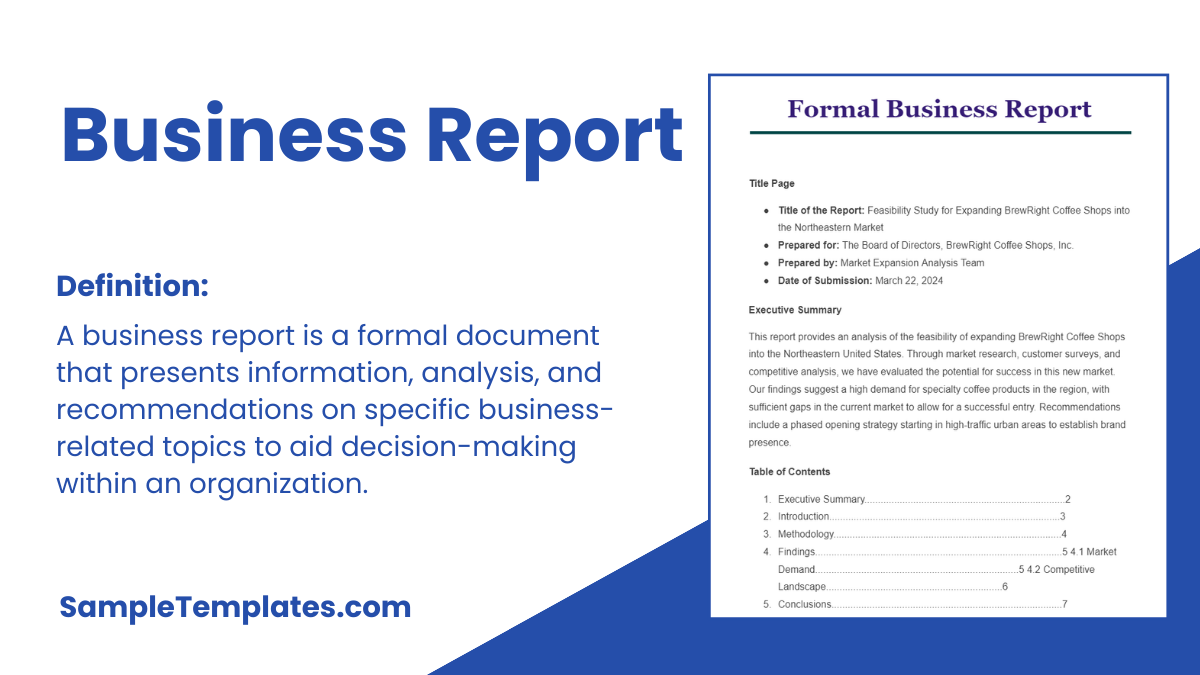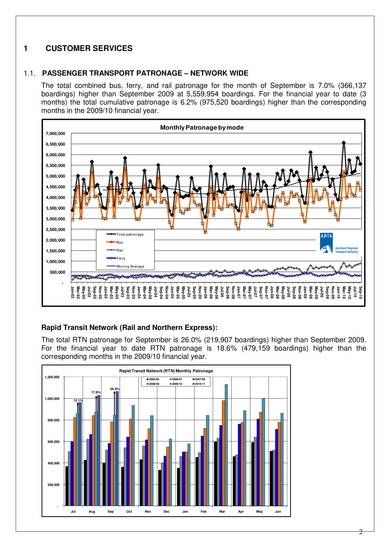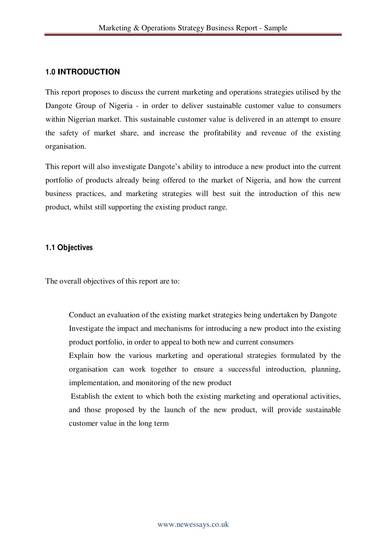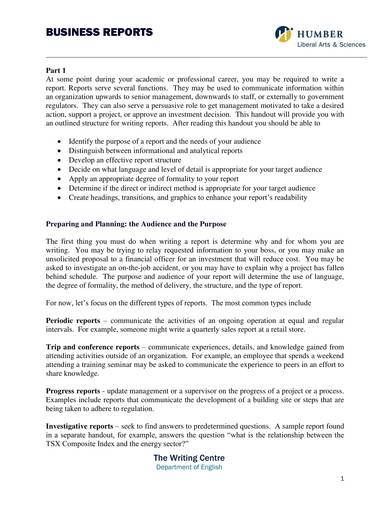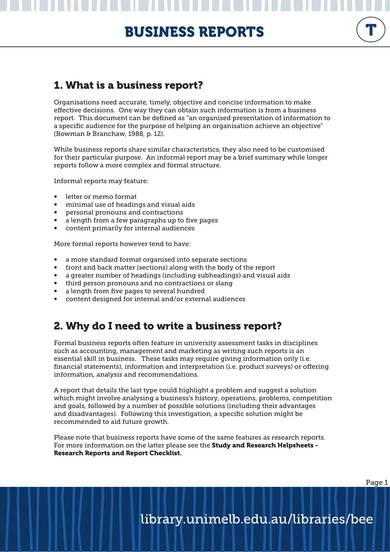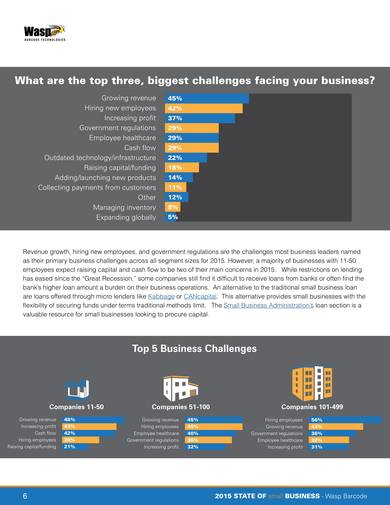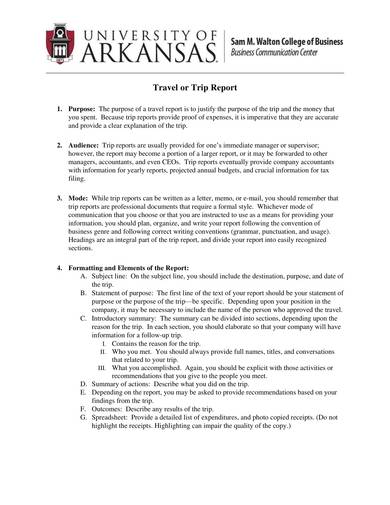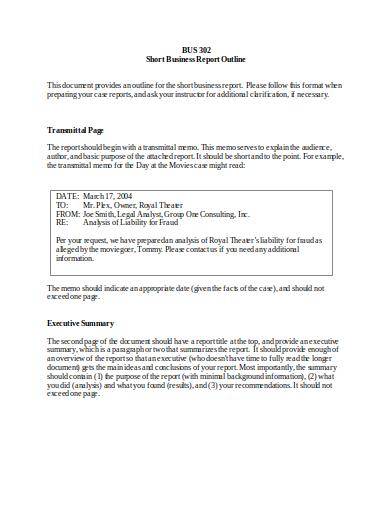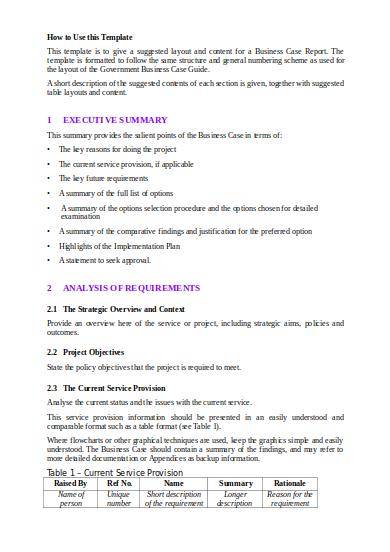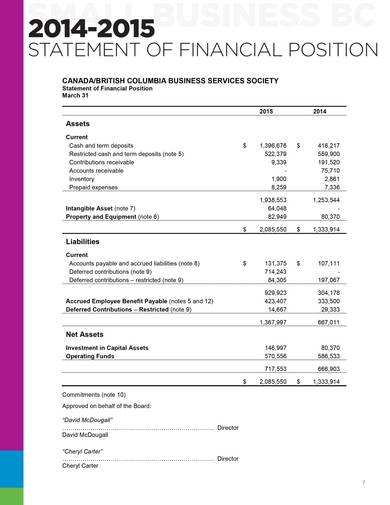Any company or business needs a comprehensive business report. It is because it drives them to where their company is. It is a business paper that evaluates the issues, concerns, projects, activities, and other operations inside a company report. But are you sure you are writing the report correctly? Business reports can affect the well being of the company, its brand, clients, and stakeholders. Make sure you are right on track by using business report samples.
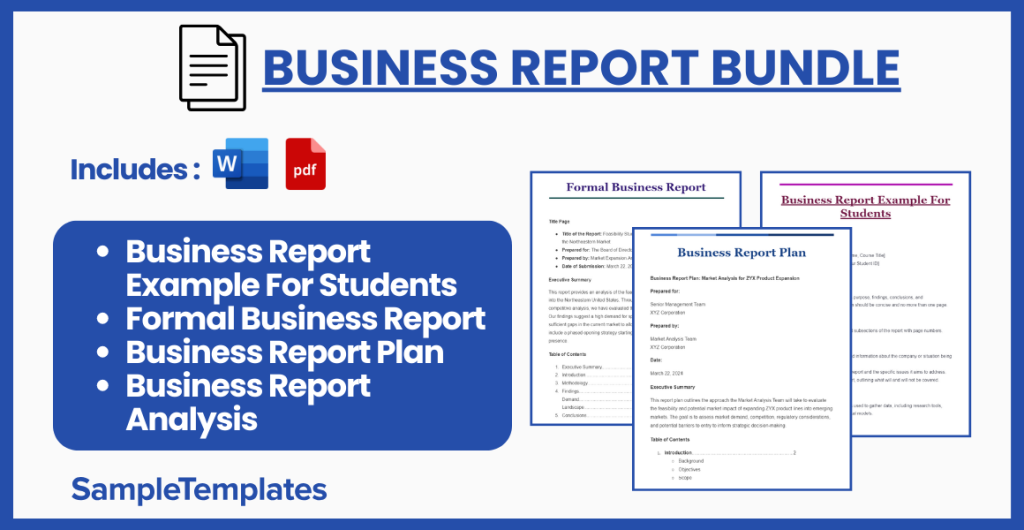
Download Business Report Bundle
Business Report Example For Students
Title Page
- Title of the Report
- Prepared for: [Instructor’s Name, Course Title]
- Prepared by: [Your Name, Your Student ID]
- Date
Executive Summary
- A brief overview of the report’s purpose, findings, conclusions, and recommendations. This section should be concise and no more than one page.
Table of Contents
- A list of the major sections and sub-sections of the report with page numbers.
Introduction
- Background: Brief background information about the company or situation being analyzed.
- Purpose: The purpose of the report and the specific issues it aims to address.
- Scope: The scope of the report, outlining what will and will not be covered.
Methodology
- An explanation of the methods used to gather data, including research tools, surveys, interviews, or analytical models.
Findings and Analysis
- Findings: Present the data or information discovered during your research. Use charts, graphs, and tables to support your points.
- Analysis: Analyze the findings in the context of the problem or issue being addressed. Discuss patterns, trends, and any anomalies found.
Conclusions
- Summarize the main insights or findings from the analysis. Clearly state how these findings address the report’s purpose.
Recommendations
- Based on the conclusions, offer practical recommendations for action. Ensure these are specific, feasible, and linked to the findings.
References
- A list of all sources consulted and cited in the preparation of the report. Follow a consistent citation style (APA, MLA, Chicago, etc.).
Appendices
- Include any additional material that supports the report’s content, such as raw data, full survey/questionnaire results, or detailed analysis. Each appendix should be referenced in the main body of the report.
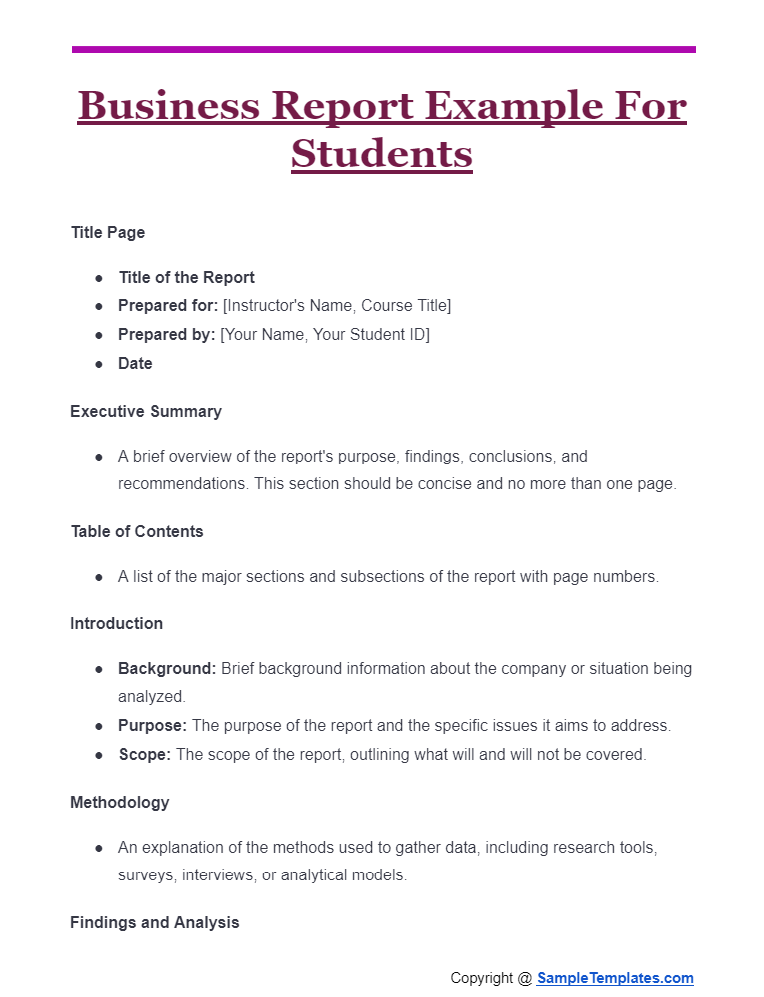
Formal Business Report
Title Page
- Title of the Report: Feasibility Study for Expanding BrewRight Coffee Shops into the Northeastern Market
- Prepared for: The Board of Directors, BrewRight Coffee Shops, Inc.
- Prepared by: Market Expansion Analysis Team
- Date of Submission: March 22, 2024
Executive Summary
This report provides an analysis of the feasibility of expanding BrewRight Coffee Shops into the Northeastern United States. Through market research, customer surveys, and competitive analysis, we have evaluated the potential for success in this new market. Our findings suggest a high demand for specialty coffee products in the region, with sufficient gaps in the current market to allow for a successful entry. Recommendations include a phased opening strategy starting in high-traffic urban areas to establish brand presence.
Table of Contents
- Executive Summary………………………………………………………………..2
- Introduction………………………………………………………………………….3
- Methodology…………………………………………………………………………4
- Findings……………………………………………………………………………….5 4.1 Market Demand…………………………………………………………………5 4.2 Competitive Landscape………………………………………………………..6
- Conclusions………………………………………………………………………….7
- Recommendations………………………………………………………………….8
- References…………………………………………………………………………..9
- Appendices…………………………………………………………………………10
Introduction
- Background Information: BrewRight Coffee Shops, Inc., is a successful chain in the Midwest, known for its high-quality, sustainably sourced coffee and community-focused environment.
- Purpose: To evaluate the feasibility and potential success of expanding our operations into the Northeastern United States.
- Scope: This report covers market analysis, customer preferences, competition in the target market, and the financial implications of an expansion.
- Methodology: The analysis was conducted using a combination of online market research, customer surveys within the target demographic, and financial modeling.
Findings
- Market Demand: Surveys indicate a strong preference for specialty coffee in the Northeast, with 60% of respondents expressing dissatisfaction with current offerings.
- Competitive Landscape: While there are established competitors, none currently offer the combination of high-quality, sustainably sourced coffee and community space that BrewRight provides.
Conclusions
The analysis indicates a significant opportunity for BrewRight Coffee Shops to expand into the Northeastern market. The demand for specialty coffee, combined with the unique value proposition of BrewRight, suggests a favorable market entry.
Recommendations
- Phase One: Open three flagship stores in high-traffic urban areas to build brand awareness.
- Marketing Strategy: Leverage social media and local community events for promotion.
- Sustainability Focus: Highlight our commitment to sustainability in our marketing materials to appeal to the environmentally conscious market segment.
References
- National Coffee Drinking Trends, 2024.
- Northeastern Urban Market Analysis Report, 2023.
Appendices
- Appendix A: Customer Survey Results
- Appendix B: Detailed Financial Projections for Northeast Expansion
This sample report outlines how to organize and present a business analysis, ensuring clarity and providing detailed insights into the feasibility of a proposed expansion. Tailor each section to fit the specifics of your analysis, ensuring your report is both informative and persuasive to its intended audience
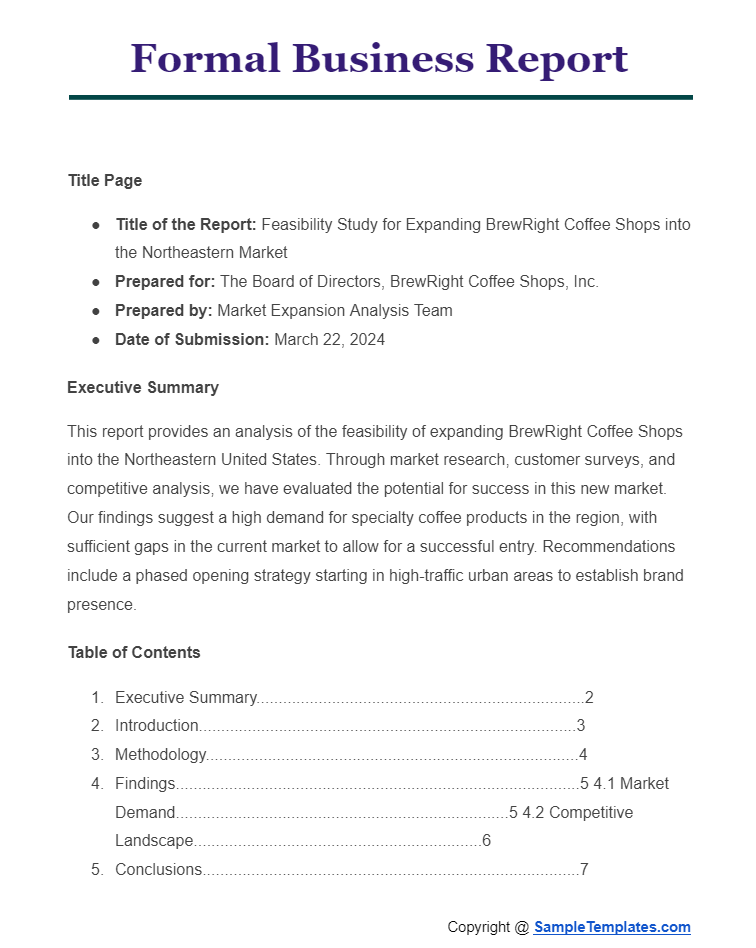
Business Report Plan
Business Report Plan: Market Analysis for ZYX Product Expansion
Prepared for:
Senior Management Team
XYZ Corporation
Prepared by:
Market Analysis Team
XYZ Corporation
Date:
March 22, 2024
Executive Summary
This report plan outlines the approach the Market Analysis Team will take to evaluate the feasibility and potential market impact of expanding ZYX product lines into emerging markets. The goal is to assess market demand, competition, regulatory considerations, and potential barriers to entry to inform strategic decision-making.
Table of Contents
- Introduction……………………………………………………………………2
- Background
- Objectives
- Scope
- Methodology…………………………………………………………………..3
- Research Methods
- Data Sources
- Market Analysis………………………………………………………………4
- Market Demand
- Competitive Analysis
- Regulatory Environment
- SWOT Analysis………………………………………………………………..5
- Strengths
- Weaknesses
- Opportunities
- Threats
- Risk Assessment……………………………………………………………..6
- Market Entry Risks
- Operational Risks
- Financial Projections………………………………………………………..7
- Initial Investment
- Revenue Forecasts
- Profit Margins
- Recommendations…………………………………………………………..8
- Strategic Recommendations
- Implementation Plan
- Conclusion…………………………………………………………………….9
- References…………………………………………………………………..10
- Appendices…………………………………………………………………11
- Appendix A: Detailed Market Research Findings
- Appendix B: Financial Models and Projections
Introduction
- Background: XYZ Corporation has identified potential growth opportunities for its ZYX product line in several emerging markets. This expansion aligns with the company’s strategic goals of diversifying its market presence and driving growth.
- Objectives: To conduct a comprehensive market analysis to evaluate the viability of expanding the ZYX product line into selected emerging markets.
- Scope: The report will cover market demand, competition, regulatory challenges, and financial viability related to the expansion.
Methodology
- Research Methods: The team will employ a mix of qualitative and quantitative research methods, including market surveys, competitor analysis, and regulatory review.
- Data Sources: Information will be gathered from industry reports, government publications, and direct surveys of potential customers.
Market Analysis
- Market Demand: Assessment of current demand and future growth potential for ZYX products in the target markets.
- Competitive Analysis: Evaluation of direct and indirect competitors, their market share, and strategies.
- Regulatory Environment: Overview of the regulatory landscape, including any barriers to entry and compliance requirements.
SWOT Analysis
Comprehensive SWOT analysis to identify the internal strengths and weaknesses of XYZ Corporation, as well as the external opportunities and threats that could impact the expansion project.
Risk Assessment
- Market Entry Risks: Identification of potential risks associated with market entry, including cultural, economic, and political factors.
- Operational Risks: Assessment of risks related to operations, supply chain, and logistics in the new markets.
Financial Projections
Detailed projections of the initial investment required, expected revenue growth, and profitability of the ZYX product expansion into emerging markets.
Recommendations
Strategic recommendations based on the analysis and findings, including an implementation plan outlining the steps XYZ Corporation should take to successfully enter the target markets.
Conclusion
A summary of the key findings, implications for XYZ Corporation, and the proposed next steps for the ZYX product line expansion.
References
A list of all sources used in the preparation of this report plan.
Appendices
- Appendix A: Detailed Market Research Findings
- Appendix B: Financial Models and Projections.
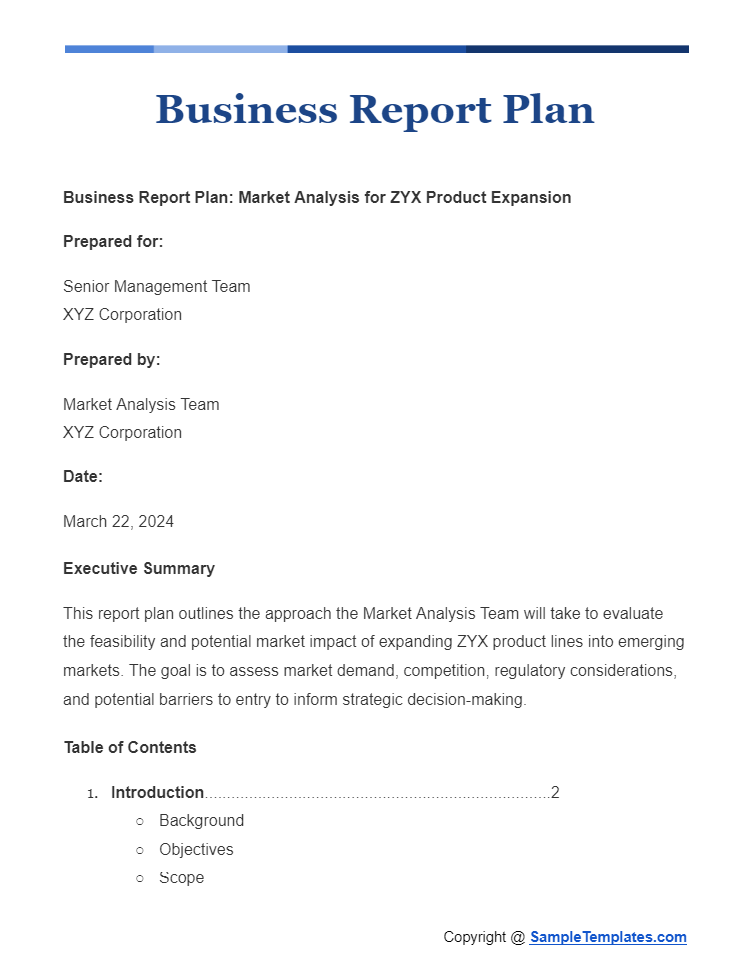
Business Report Analysis
Business Report Analysis: Impact of Remote Work on Employee Productivity
Prepared for:
Executive Leadership Team
ABC Corporation
Prepared by:
Human Resources and Operations Department
ABC Corporation
Date:
March 22, 2024
Executive Summary
This analysis investigates the impact of remote work on employee productivity within ABC Corporation over the past year. Utilizing internal performance metrics, employee surveys, and industry benchmarks, the report evaluates the effectiveness of remote work arrangements and offers strategic recommendations to enhance productivity and employee satisfaction.
Table of Contents
- Introduction……………………………………………………………………2
- Purpose
- Background
- Scope
- Methodology…………………………………………………………………..3
- Data Collection Methods
- Analysis Techniques
- Findings…………………………………………………………………………4
- Employee Productivity Metrics
- Survey Insights
- Industry Comparisons
- Analysis………………………………………………………………………..5
- Trends and Patterns
- Impact of Remote Work on Productivity
- Comparison with Industry Standards
- Challenges and Opportunities…………………………………………….6
- Remote Work Challenges
- Opportunities for Improvement
- Recommendations…………………………………………………………..7
- Enhancing Remote Work Policies
- Tools and Resources for Remote Employees
- Training and Support
- Conclusion…………………………………………………………………….8
- References……………………………………………………………………9
- Appendices………………………………………………………………….10
- Appendix A: Employee Survey Results
- Appendix B: Productivity Analysis Data
Introduction
- Purpose: To analyze the effects of remote work on employee productivity and identify areas for improvement.
- Background: ABC Corporation transitioned to a remote work model one year ago in response to global health concerns. This shift has prompted a reevaluation of work policies and productivity metrics.
- Scope: The report focuses on the period from March 2023 to March 2024, comparing productivity levels before and after the transition to remote work.
Methodology
- Data Collection Methods: Data were collected through employee productivity software, internal performance reviews, and an all-employee survey conducted in February 2024.
- Analysis Techniques: Statistical analysis was used to identify trends and correlations between remote work and productivity levels. Benchmarking against industry standards provided additional context.
Findings
- Employee Productivity Metrics: Data indicates a 10% increase in overall productivity metrics among remote employees.
- Survey Insights: 85% of employees reported higher job satisfaction levels, citing flexibility and lack of commute as key factors.
- Industry Comparisons: ABC Corporation’s productivity increase aligns with industry trends, although at a slightly higher rate.
Analysis
- Trends and Patterns: The increase in productivity is correlated with the implementation of flexible work schedules and access to productivity tools.
- Impact of Remote Work: Remote work has generally had a positive impact on productivity and employee satisfaction, though challenges such as isolation and communication barriers were noted.
- Comparison with Industry Standards: Compared to industry benchmarks, ABC Corporation is performing well, but there is room for improvement in remote work infrastructure and support.
Challenges and Opportunities
- Remote Work Challenges: Key challenges include maintaining company culture, ensuring effective communication, and managing remote work fatigue.
- Opportunities for Improvement: Enhancing virtual collaboration tools, offering regular training, and implementing more flexible work policies can further improve productivity.
Recommendations
- Enhancing Remote Work Policies: Develop more flexible and inclusive policies to support diverse working styles.
- Tools and Resources: Invest in advanced collaboration tools and technologies to facilitate better communication and workflow management.
- Training and Support: Provide ongoing training and support for both managers and employees to navigate remote work challenges effectively.
Conclusion
The shift to remote work has positively affected employee productivity at ABC Corporation. By addressing identified challenges and leveraging opportunities for improvement, the company can further enhance productivity and employee well-being.
References
A comprehensive list of all academic, industry, and internal documents referenced in the analysis.
Appendices
- Appendix A: Detailed results from the employee satisfaction and productivity survey.
- Appendix B: Data and statistical analysis supporting productivity metrics.
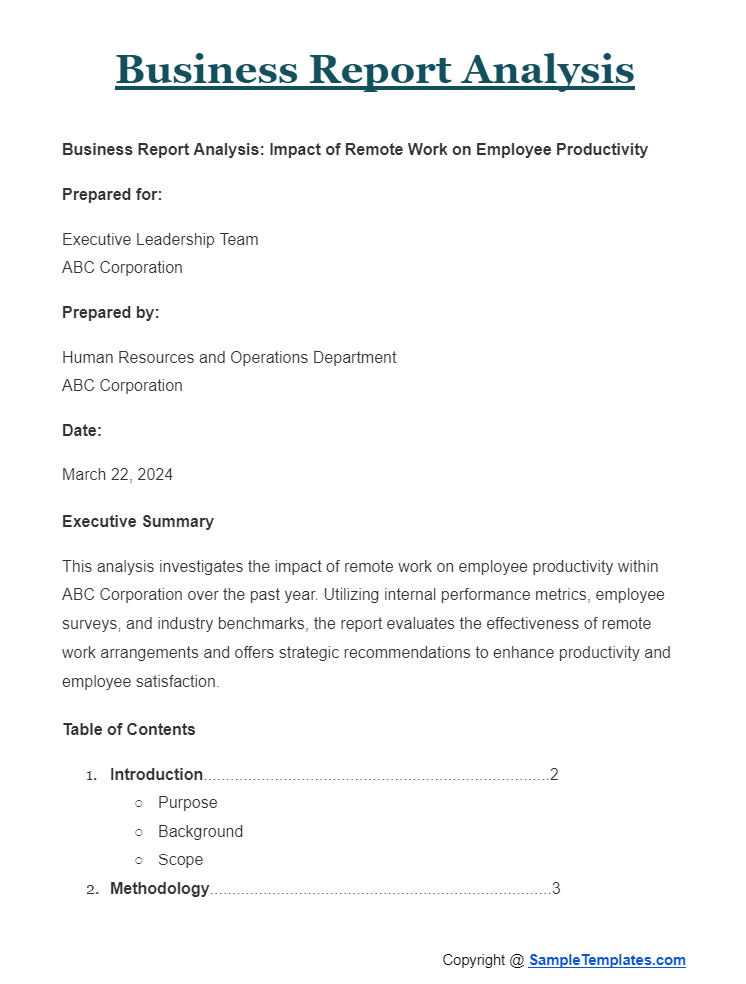
Browse More Templates On Business Report
Quarterly Business Report Template
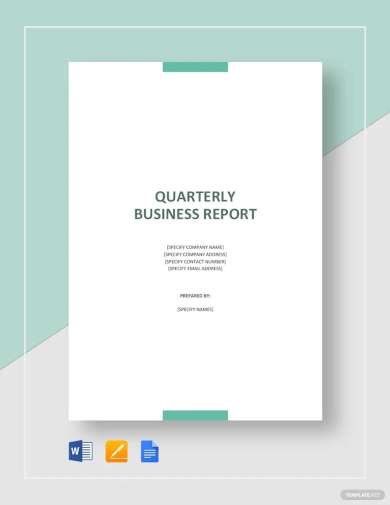
Business Report Template
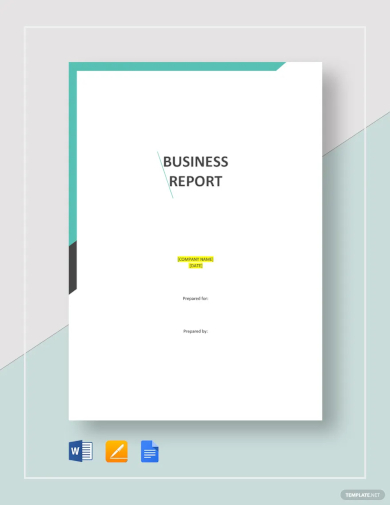
Company Business Report Template
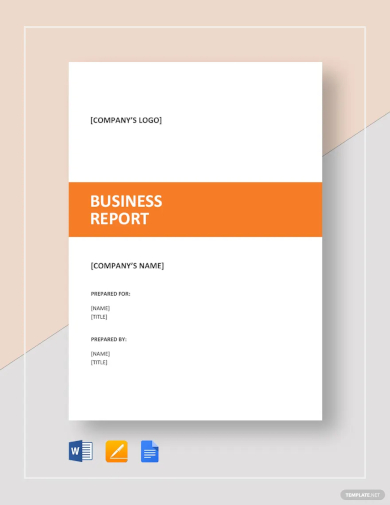
Components of a Business Report
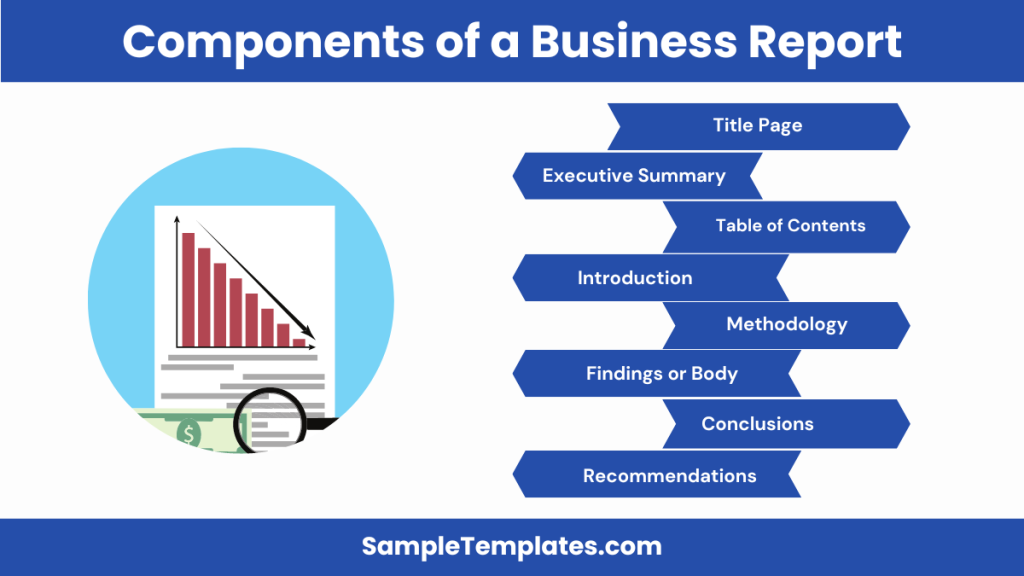
A well-structured business report is crucial for conveying information in a clear, concise, and actionable manner. Here are the nine essential components that typically make up a comprehensive business report:
- Title Page
- The title page includes the report’s title, the name of the person or entity it’s prepared for, the name of the author(s), and the date of submission.
- Executive Summary
- This section provides a brief overview of the report’s main points, findings, and recommendations. It’s designed to give readers a quick and comprehensive understanding of the report’s content without needing to read the entire document.
- Table of Contents
- The table of contents lists all the sections, subsections, tables, and figures included in the report along with their corresponding page numbers. It helps readers easily navigate the document.
- Introduction
- The introduction sets the context for the report. It typically includes the background, the purpose of the report, and sometimes the methodology used in preparing the sample report. It might also outline the scope or limitations of the report.
- Methodology
- This section describes the methods used to gather data, conduct research, and analyze information. It provides details on the approach taken to ensure the report’s findings are reliable and valid.
- Findings or Body
- The findings section is the core of the report, presenting the data, analysis, and results of the research. It should be organized logically, with subheadings to guide the reader through the information.
- Conclusions
- Conclusions are drawn from the analysis provided in the findings section. This part summarizes what has been learned or what the analysis has shown, without introducing new information.
- Recommendations
- Based on the conclusions, this section suggests a course of action. Recommendations should be clear, feasible, and directly related to the conclusions of the report. You can also see more on Student Business Report.
- Appendices
- The appendices include supplementary material that is relevant to the report but not essential to its main content, such as raw data, detailed tables, technical notes, or elaboration on methodologies used.
These components work together to ensure that a short business report is informative, persuasive, and easy to understand, allowing decision-makers to take informed actions based on its findings.
Short Business Report Sample Template
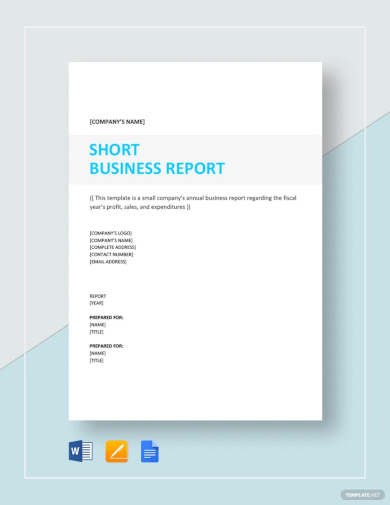
Annual Business Report Template
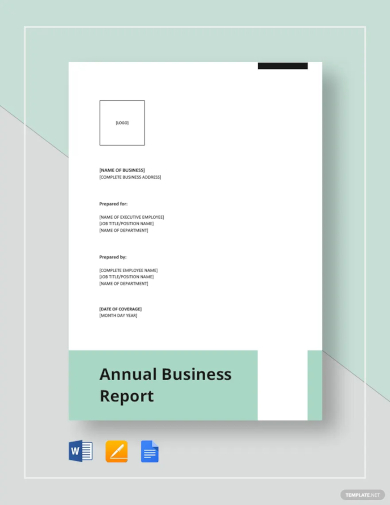
Business Report White Paper Template
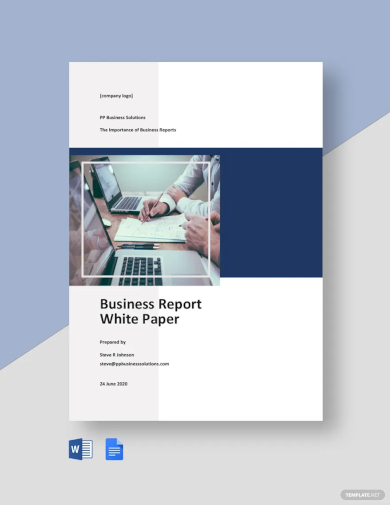
Types of Business Reports
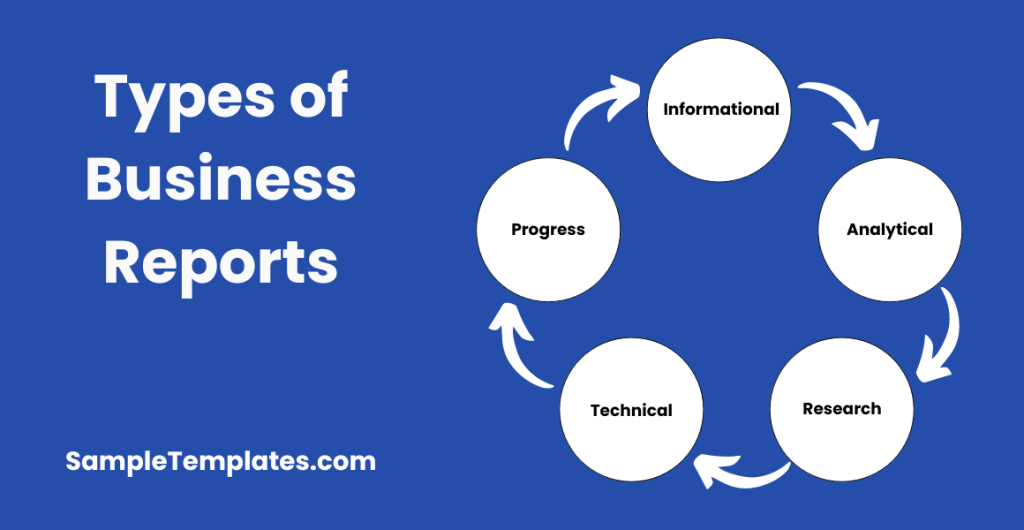
Business reports vary widely in purpose, content, and format, depending on the specific needs of the business and the intended audience. Here are some common types of business reports:
- Informational Reports:
- These provide data or findings without analysis or recommendations. Examples include monthly financial reports, staff updates, and inventory logs. They’re typically used to keep stakeholders informed of ongoing activities and statuses.
- Analytical Reports:
- These involve data collection and analysis to address specific questions or problems. Analytical reports often conclude with recommendations based on the analysis. Market research reports, feasibility studies, and employee performance evaluations are examples.
- Research Reports:
- Similar to analytical reports, research reports involve in-depth study and analysis of a specific issue or sector. They are often used for new product development, entering new markets, or academic purposes.
- Technical Reports:
- These provide detailed technical information on processes, projects, or products. Technical reports might cover engineering designs, software development, laboratory research, or product testing results.
- Progress Reports:
- Also known as interim reports, they track the progress of ongoing projects or initiatives. They can include status updates on milestones, budget usage, and any issues or challenges faced.
- Financial Reports:
- These are critical for any business, providing insights into the financial health of the organization. Balance sheets, income statements, cash flow statements, and auditor’s reports are common examples.
- Compliance Reports:
- These are required by governmental organizations or industry regulators to ensure that a business complies with legal requirements and regulations. Compliance reports can cover environmental regulations, safety standards, and financial regulations.
- Incident Reports:
- Used to document accidents, security breaches, or other unexpected events. These reports are crucial for addressing the incident, understanding what happened, and preventing future occurrences.
- Feasibility Reports:
- These assess the viability of a proposed project or initiative. Feasibility reports examine logistical, financial, and operational aspects to determine if the project should proceed.
- Annual Reports:
- Produced yearly, these reports provide a comprehensive overview of a company’s activities, financial performance, and strategy over the previous year. They are often shared with shareholders, investors, and other stakeholders.
Each type of business report serves a distinct purpose and requires a specific approach to effectively communicate its intended message. The choice of simple report type depends on the information needs of the audience and the objectives of the report.
Sample Business Management Report Template
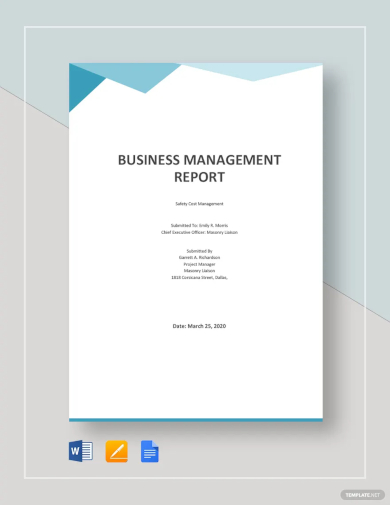
Monthly Business Report Template
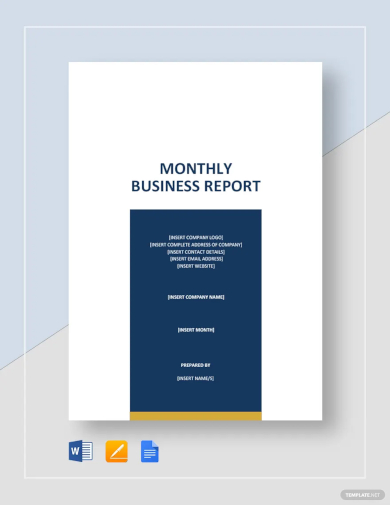
Business Report Cover Page Template
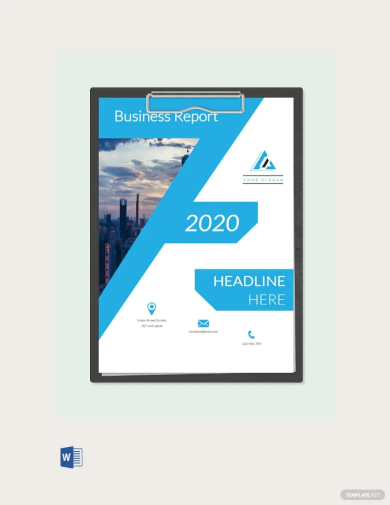
Commercial Business Report Template
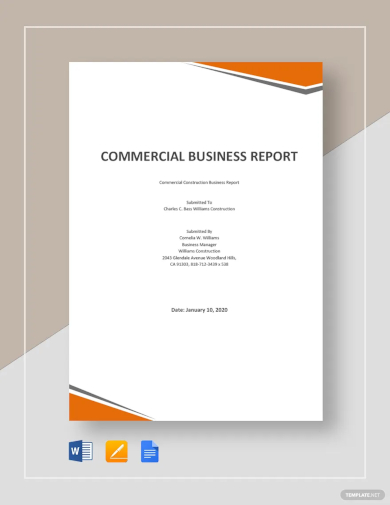
University Business Report Template
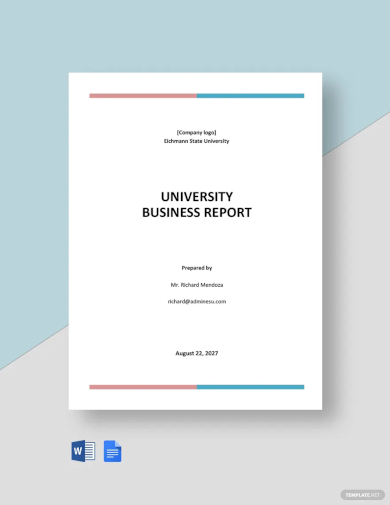
Short Business Report Template
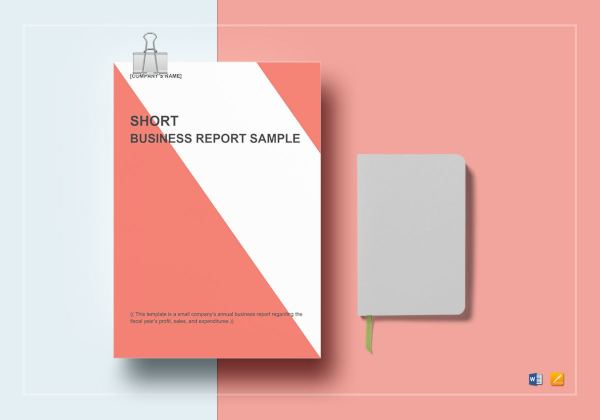
Weekly Business Report Template

Importance of Creating Business Reports
Creating business reports is a fundamental aspect of strategic management and operational oversight within any organization. These reports serve several critical purposes, contributing significantly to informed decision-making, performance evaluation, and strategic planning. Here are some key reasons why creating business reports is important:
- Informed Decision-Making: Business reports provide detailed insights into various aspects of an organization, such as financial health, market position, operational efficiency, and employee productivity. This information enables managers and stakeholders to make informed decisions based on data and analysis rather than intuition or speculation.
- Performance Evaluation: Regular business reporting helps track the performance of different departments, projects, and initiatives over time. By analyzing these reports, organizations can identify areas where they are excelling and areas that need improvement, facilitating targeted interventions to enhance overall performance.
- Strategic Planning: Business reports often contain valuable information on market trends, customer behavior, and competitive landscape. This information is crucial for strategic planning, as it allows businesses to identify opportunities for growth, diversification, and investment, as well as potential threats to their operations.
- Problem Identification and Resolution: Through the systematic analysis of business operations, reports can help identify underlying problems that may not be apparent on the surface. Once identified, these issues can be addressed through strategic changes or operational improvements, thereby preventing minor problems from escalating into more significant issues.
- Financial Management: Financial reports are essential for monitoring the financial health of an organization. They provide key metrics such as revenue, expenses, profit margins, and cash flow, which are crucial for budgeting, financial planning, and securing investments or loans.
- Transparency and Accountability: Business reports foster a culture of transparency and accountability within organizations. By documenting and sharing findings and performance metrics, everyone within the organization is kept informed about its direction, priorities, and challenges, which can enhance trust and alignment among employees and stakeholders.
- Regulatory Compliance and Governance: For many businesses, especially those in highly regulated industries, reporting is not just beneficial but mandatory. Compliance reports ensure that the company is adhering to laws, regulations, and standards, thereby avoiding fines, penalties, and legal issues.
- Communication with Stakeholders: Business reports are an effective communication tool for engaging with stakeholders, including investors, creditors, customers, and employees. They provide stakeholders with a clear picture of the company’s performance and strategic direction, helping to build confidence and support.
In conclusion, business reports are indispensable tools for organizational success. They provide a structured way to analyze and communicate key information, facilitating better management practices, strategic alignment, and sustained growth. You can also see more on Retail Business Report.
Basic Business Report Template
Marketing & Operations Strategy Business Report Template
Business Report Example
Business Report Format
Small Business Report Template
Business Travel or Trip Report Template
Local Business Report Template
Short Business Report Outline
Business Case Report Template
Small Business Annual Report Template
What Is a Business Report?
Business reports are handy when it comes to business evaluations, analysis, analytics, sales evaluations, profits, assets, and other related stuff. The purpose of this business paper is to communicate relevant data analysis and information efficiently. They show the author’s findings and conclusions concerning the company’s issue or problem. When it comes to creating such reports, the most important thing is that you know your report’s function. You can pick some of our downloadable business report templates to help you get started. You can also see more on Business Valuation Reports.
How to Make a Perfect Business Report?
Each business report is not the same. It varies based on the subject, purpose, scope, variables, and information to cover. But you have to make sure that you include all the necessary details that all reports should have. To make such perfect business reports, here are some of the steps that you need to follow:
Step 1: Know Your Purpose
Business reports have a different purpose and vision. You should know and understand your purpose to create the perfect report content. Whether you want to assess your revenue statement, monitor your project, or perhaps you want to evaluate and audit your assets and stock, it should answer to your document’s who, when, why, where, and how.
Step 2: Use the Right Format and Layout
Once you already know your purpose of creating a business paper, the next you must do is pick the right format and layout of your business report. You can use our several business report templates. They are easy to edit and customize. When it comes to writing the details, you better start writing using a professional tone, include the company’s branding, and come up with an understandable flow and structure. They would make your sample report credible.
Step 3: Fill In All the Details
Once you know your purpose and have already selected the correct format, start filling in your business report template with the required information. Don’t forget to organize and arrange it. And make it as short and clear as possible. Nobody wants to read a wordy report. It will bore the readers if it happens. That is why it is better to summarize everything and make it understandable.
Step 4: Come Up With a Great Conclusion
After everything, you must formulate a great conclusion. It is also better if you come up with solutions and recommendations on how to improve the business. A comprehensive analysis report can help you achieve the right ideas and strategies. Also, you may add these recommendations and solutions to your executive summary. After a thorough review, you can present your report.
FAQs
Why is a business report important?
Business reports are valuable instruments for directing decision-making and allowing the opportunity for business owners and senior management report to investigate and fix any problems found.
What are the types of business reports?
The types of business reports are:
- Annual report
- Inventory report
- Sales and revenue report
- Marketing report
- Website traffic or social media report
What are the five elements of a business report?
The five elements of a business report are:
- Table of contents
- Executive summary
- Body
- Findings or results
- Conclusion
Business reports are inevitably beneficial to every company. With the right business report templates, companies can evaluate business matters properly. The next time you’ll have to create yours, our downloadable templates are ready to help you. Download it now!
Related Posts
Sample Chemistry Lab Reports
School Accomplishment Report Samples & Templates
Field Report Samples & Templates
Sample Science Project Reports
Survey Reports Samples & Templates
Sample Feasibility Reports
Psychological Assessment Report Samples [ Clinical, Child, Intake ]
Report Format Samples & Templates
Acknowledgement for Internship Report Samples [ Hotel, Hospital, Teaching ]
Field Trip Report Samples [ Agriculture, Educational, Environmental ]
Student Counseling Report Samples
Narrative Accomplishment Report Samples [ Science, Teacher, Reading ]
Sample Acknowledgment Report Templates
Internship Narrative Report Samples
Interview Summary Report Samples
